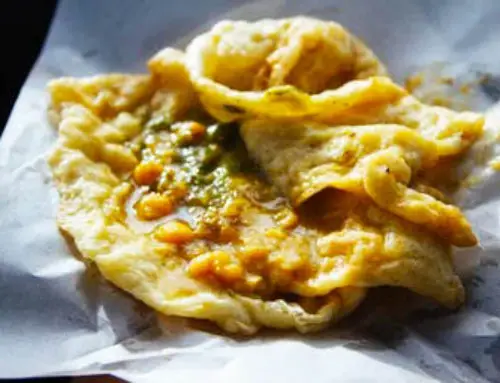Chadon Beni – The Wild Trinidad Herb
Found throughout Trinidad, the Chadon Beni herb is a staple for good home cooking in every Trini family kitchen.
Table of Contents
What is Chadon Beni
Chadon Beni is a herb that grows in patches that is used for seasoning food by people from the Caribbean, Central and South America, and also Mexico.
‘Chadon’ is likely a misspelling arising from a historical mispronunciation of the French Patois word – ‘chardon‘.
Chardon means herb, and ‘béni‘ in French means ‘blessed’.
Combined, the two words literally mean ‘blessed herb‘.
This blessed herb is perhaps, most commonly found in the twin Caribbean island of Trinidad and Tobago where it is used extensively for cooking.
While it is known internationally as ‘culantro‘, it is referred as ‘bhandhania’ in Trinidad but also has many other names depending on where in the world you are.
Other names for the herb include:
- shadow benny
- shado beni
- bhandhania
- bandanya
- chicoria
- cilantro ancho
- cilantro de monte
- cilantro sabanero
- culantro (not to be confused with ‘cilantro‘ which is a different herb entirely)
- fitweed
- recau
- shado beni
- sneki wiwiri
Cilantro is a completely different plant with leaves easily discernible to culantro’s.
The taste of cilantro is somewhat similar to Chadon Beni, but more like a milder version of it.
Cilantro seeds are also used in cooking and is commonly referred to as Coriander.
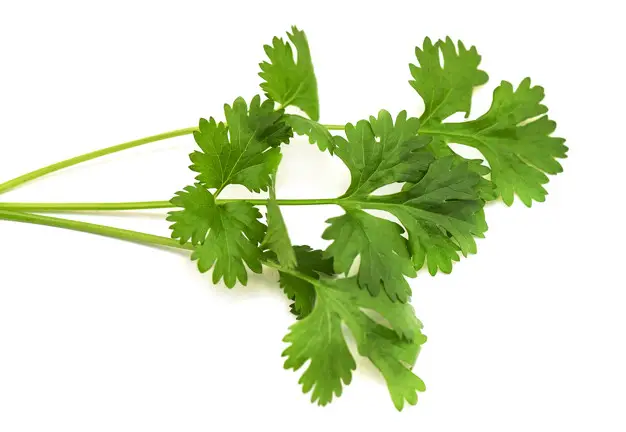
Cilantro Leaves
The scientific name for Chadon Beni is Eryngium Foetidum
The herb has a long history of use in Trinidad and Tobago’s cuisine for dishes such as ‘doubles‘ (a type of Trinidadian sandwich served as street food), ‘bake and shark’, pholourie, chutneys, soups, sauces, meats, curries, even vegetables and many other local dishes.
The plant can be found growing just about anywhere – on hillsides near waterfalls, in tropical forests and even on the roadside.
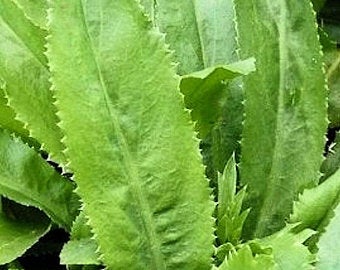
Chadon Beni Leaves
The plant itself has green leaves that resemble grass blades which usually grow from 3 to 6 inches long but can sometimes reach 8 inches which is rare.
The edges of the leaves are somewhat prickly and can cause skin irritation for sensitive people if not handled with gloves.
The leaves when freshly picked can be immediately used in seasoning, marinating and garnishing food.
A very strong aromatic scent is exuded by the plant especially after being freshly picked.
The colour of the leaves will be deep bright green in the freshest of the herb.
How To Grow Chadon Beni
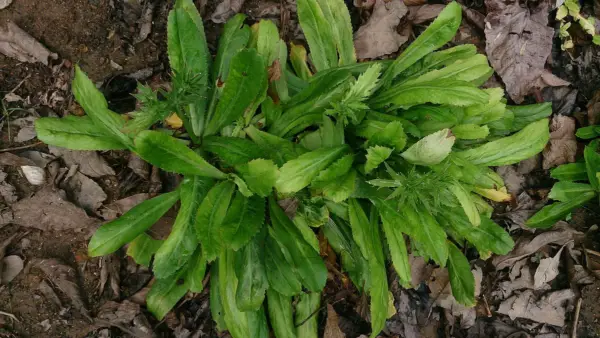
Growing Chadon Beni
Chadon Beni farming is very easy to do as the plant is very tolerant to its environment.
Follow the instructions below to get the best results from your herb:
- Select an area with partial shade and fertile soil
- Ideally, the soil should be well-drained and have a pH of 6.0 to 7.5
- Dig holes 8-12 inches apart and plant the Chadon Beni
- If you can, add nutrients including fertilizer to the soil
- Add water regularly when you notice the top inch of the soil becomes dry (you may not need to add water at all on some days in the rainy season)
- Only pick the outermost leaves once they are large enough for use (the rest will grow out in time)
Growing Chadon Benny is a relatively easy task.
Even if you don’t precisely follow these instructions, the plant is so generous that it will still grow anyway, just not as big.
Health Benefits
The use of Chadon Beni to treat medical issues has been documented in an online science journal in April 2011.
Fitoterapia is a Journal dedicated to medicinal plants and to bioactive natural products of plant origin.
In Fitoterapia’s review of Eryngium Foetidum, it has noted that Chadon Beni has been used to treat a wide range of health issues including burns, earache, fevers, hypertension, constipation, fits, asthma, stomach ache, worms, infertility complications, snake bites, diarrhea and malaria.
Further research of this herb is needed as there is preliminary evidence to suggest that a main chemical ingredient of Chadon Beni, Eryngial, is effective against parasitic trypanosomes, nematodes, fungi and bacteria in humans and other mammals.
Chadon Beni Seeds
Chadon Beni seeds are available throughout Trinidad.
The seeds grow into plants within 6 weeks of planting.
As with the roots, the Chadon Beni seeds can also be easily grown without much care and attention.
Chadon Benny Substitute
Chadon Beni can be substituted with fresh cilantro.
Chadon Benny has a stronger flavor so you will have to adjust the amount of cilantro to taste.
Keep adding more cilantro leaves, even up to 4 times more, until you get the desired flavour.
Availability
Chadon Beni can be purchased at most local markets in Trinidad and Tobago where you’d easily find the leaves being sold in stacks.
You can even purchase it on Amazon!
A typical package will range from $12-$30 USD, depending on how much you want to buy.
If you are just starting out, it may be best to buy a small package and see how you feel about the taste before investing in larger amounts.
Preservation
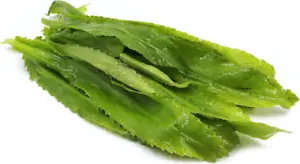
Shado Benny in the Fridge
Chadon Beni can easily be stored in a refrigerator to prolong its shelf life after picking from the ground without risk of losing any flavour.


